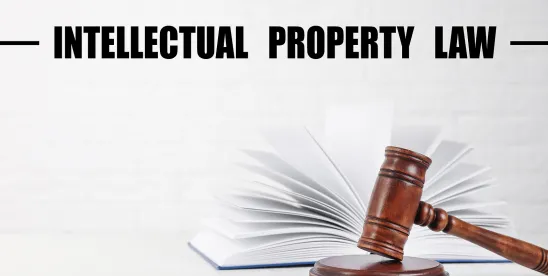| Go-To Guide: |
|
The Federal Circuit’s March decision in In re Xencor, Inc., No. 24-1870 (Fed. Cir. Mar. 13, 2025) has altered the landscape for patent applicants using a Jepson claim format, creating new challenges that may warrant careful consideration. The ruling not only impacts written description requirements but has potential implications for subject matter eligibility analysis under 35 USC §101. As practitioners navigate these new waters, understanding both the Xencor decision and its broader ramifications appear to have become essential for effective patent prosecution strategy.
The Xencor Decision: Raising the Bar for Jepson Claims
The Federal Circuit upheld the rejection of Xencor Inc.’s patent application for an antibody treatment method, finding that the company’s Jepson-formatted claims failed to adequately describe the state of the prior art. Named after a 1917 ruling, claims in Jepson format recite a preamble detailing previously known art followed by an improvement clause describing the applicant’s novel contribution that improves that art.
The court’s decision sets forth a critical new principle: “The invention is not only the claimed improvement, but the claimed improvement as applied to the prior art, so the inventor must provide written description sufficient to show possession of the claimed improvement to what was known in the prior art.” In Xencor, while the application described an improved method for treating patients with specific antibodies, the court found the evidence to establish that such antibody treatments were well-known in the field insufficient.
This ruling may create a hurdle for Jepson claim users, as it requires applicants to adequately describe both their improvement and the underlying technology it builds upon. The court expressly rejected the position that inventors could assert something is “well-known” without proper description, using a hypothetical example of someone claiming an improvement to a “time machine” without sufficiently describing such a device in their patent. According to the Federal Circuit, allowing such practice would leave the patent system vulnerable to abuse.
The decision does acknowledge that description requirements will vary based on factors including “the unpredictability of the art and the newness of the technology.” For example, while “automobile” needs little explanation today, the term would have required extensive elaboration in the 19th century. However, beyond this example, the court provided limited guidance on when technology becomes sufficiently well-known to forgo detailed description in a Jepson claim.
While patent examiners may sometimes recommend a Jepson-style claim to more quickly advance prosecution, practitioners that may have agreed to such a suggestion should now consider rejecting such an offer, given the heightened scrutiny these claims will face. Examiners and courts will need to evaluate whether the applicant’s description of prior art is adequate, creating new validity concerns that many applicants may prefer to avoid entirely.
Potential Implications for 35 USC §101 Analysis: Technical Problems and Solutions
The Xencor decision’s impact extends beyond written description requirements and into the realm of subject matter eligibility under 35 USC §101. This ruling reinforces the USPTO’s existing guidance that patent applications should clearly articulate technical problems and technical solutions to overcome subject matter eligibility challenges.
Heightened Need for Technical Problem-Solution Discussion
The Federal Circuit’s emphasis on “possession of the claimed improvement to what was known in the prior art” parallels the USPTO’s approach to analyzing eligibility under the Alice/Mayo framework. When examiners evaluate whether claims are directed to abstract ideas, they look for “meaningful limitations” that demonstrate the invention improves computer functionality or other technology. The Xencor ruling effectively raises the bar for these demonstrations, likely requiring more robust technical disclosures in the specification for some technical fields.
Patent applicants should consider being more diligent in clearly identifying the specific technical problem being addressed and precisely how their claimed solution resolves this issue. Rather than generic statements about efficiency, accuracy, or convenience, specifications should articulate concrete technical challenges in the prior art and explain how the claimed solution overcomes these challenges through technical means. Just as the Xencor court rejected vague assertions about “well-known” prior art, examiners may scrutinize vague claims of technical improvement without supporting technical explanation.
For example, an application claiming improved data processing algorithms should detail the specific technical limitations of existing processing methods (such as, for example, excessive memory usage, processing bottlenecks, or inability to handle specific data formats) and then explain how the claimed invention overcomes these specific technical hurdles. This enhanced focus on the problem-solution paradigm directly aligns with the “significantly more” analysis under Step 2B of the USPTO’s subject matter eligibility examination procedure.
Particularized Technical Component Details
Perhaps the most significant §101-related implication of the Xencor decision is the heightened need for particularized technical details regarding claim components. The ruling’s emphasis on describing prior art with specificity creates a parallel requirement for describing the technical implementation of claimed elements with similar specificity to overcome §101 rejections, where articulating the distinction over the prior art and how it is improved is paramount.
In light of this decision, practitioners should consider drafting specifications that:
- Detail specific implementations: Rather than broadly claiming “a processor configured to perform X,” specifications should detail how that processor is specifically configured, what technical adaptations enable the claimed functionality, and how these configurations differ technically from conventional implementations.
- Explain technical interactions: Practitioners may wish to clarify how different components interact in technically innovative ways, avoiding descriptions that merely string together conventional components performing their routine functions.
- Provide technical metrics: Where possible, practitioners should consider including quantifiable improvements (e.g., processing speed increases, memory usage reductions, improved accuracy rates) that demonstrate the technical advancement over prior solutions.
- Link technical details to claims: Ensure that the technical details in the specification are clearly reflected in the claims, creating a coherent narrative that examiners can follow from problem to solution.
The Xencor court’s “automobile” example provides a useful framework - while certain technologies are well understood today, emerging technologies may require more extensive explanation. Similarly, under §101 analysis, applications in cutting-edge fields may need particularly robust technical disclosures to overcome the presumption that claimed elements are merely abstract ideas implemented on generic components.
Beyond Mere ‘Application’ to ‘Specific Practical Application’
The Xencor decision reinforces the distinction between a general application of known technology and a specific practical application of an improvement to technology that has become central to §101 analyses. Just as the court found that Xencor needed to describe more than just a general improvement to antibody treatments, the USPTO guidance requires that eligible claims do more than merely apply abstract ideas in a particular field using routine and conventional components. Applications thus should demonstrate specific technological improvements that go beyond mere conceptual applications. This potentially means:
- Narrowing from general concepts to specific implementations: While the application may begin with broader concepts, practitioners might wish to narrow it to specific technical implementations that can be claimed.
- Demonstrating transformative elements: Consider highlighting how the claimed elements transform the underlying technology rather than using existing technology in expected ways.
- Avoiding result-oriented claiming: Applicants should consider focusing claims on specific technical means rather than claiming desired outcomes or results.
- Creating technological interdependencies: Consider demonstrating how claimed elements work together in technically innovative ways that produce results that individual components could not achieve independently.
Conclusion
The Xencor decision represents a shift in the landscape for both Jepson claims and subject matter eligibility analysis. While directly addressing written description requirements, the decision’s underlying principles effectively raise the bar for demonstrating technical improvements necessary to overcome §101 rejections. For patent practitioners, this may mean crafting specifications that thoroughly document both the technical problem and solution, with particular attention to detailing how specific claimed components implement the invention in technically novel ways. Evolving and embracing a more rigorous approach to technical disclosure may help applicants and practitioners navigate both the Xencor requirements and the increasingly stringent §101 analysis framework examiners and judges apply.




 />i
/>i
